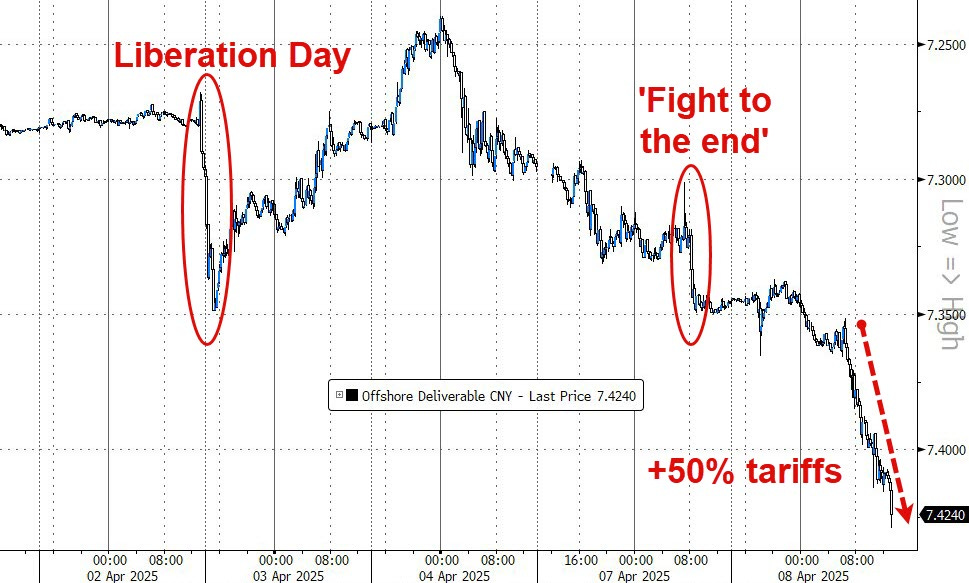US stock futures surged on Tuesday following three days of sharp losses and heightened volatility, fueled by optimism over potential progress in US tariff negotiations.
Futures linked to the S&P 500 jumped 2.7%, the Dow Jones was poised for a 1,120-point gain, or 3%, and Nasdaq futures climbed 2.4%.
Bessent, along with US Trade Representative Jamieson Greer, is set to meet with Japanese officials, who are pushing to remove the 24% tariff on Japan.
Tensions between the US and China remained high after Beijing vowed to “fight to the end” in response to President Trump’s threat of new 50% tariffs unless its retaliatory measures were quickly lifted.
Looking ahead, investors are focused on upcoming inflation data, which could impact expectations for the Federal Reserve’s next move on interest rates.
Yesterday we talked about Reagan's strategy to end the Cold War, "escalating to de-escalate." It looks like Trump is taking the same approach in his attempt to end China's multi-decade global economic war.
Just as the Soviet Union responded to Reagan's escalation with escalation, China has responded to Trump's escalation with escalation.
The Soviets were drawn into an arms race with the U.S. that economically broke them. Similarly, China has now been drawn into a trade war, which will (likely) economically break them.
That said, as we've discussed in recent weeks, we should expect China to counter Trump’s tariffs by weakening the yuan.
No surprise, heading into today's doubling of tariffs on China, the Chinese central bank has been walking its currency lower, and now have set it to very near the weakest level (versus the dollar) in 18 years.
As for the rest of the world, as the additional "reciprocal" piece of the tariff plan kicks in, it should represent the high-water mark, from which any news should be in the direction of lowering tariffs.
GRYNING | Quantitative: On April 1, we updated our forecast in the Weekly Market Signals Report for a stock market exit signal.
Our Market Signals (more information) have shown robustness during the recent sell-off, performing at -2.5% YTD with a drawdown of -5.2%, significantly outperforming the broad market in both metrics.









